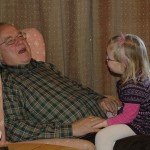Music & Neurosciences V – Blog 8 (Music and Infants)
Hello Dear Reader
 The morning of Day 4 of the Music and Neurosciences V conference featured yet another beautiful blue sky. It has rained quite a bit in Switzerland lately so it has been nice to experience a run of pleasant weather. One of the best things about Dijon is the recent pedestrianization of the streets, which means I have had lovely walks every day past the Palais Des Ducs to the talk venue. This pleasant amble will be missed.
The morning of Day 4 of the Music and Neurosciences V conference featured yet another beautiful blue sky. It has rained quite a bit in Switzerland lately so it has been nice to experience a run of pleasant weather. One of the best things about Dijon is the recent pedestrianization of the streets, which means I have had lovely walks every day past the Palais Des Ducs to the talk venue. This pleasant amble will be missed.
Although tired – this was the last day of the conference – I was determined not to miss the final two symposia of the conference. They featured comment along the lines of my new field of interest – music, health and wellbeing.
The first symposium was organised by Marie Cristina Caccuman and featured presentations by Joanne Loewy and Sandra Trehub, both seasoned professionals and highly respected researchers in developmental work.
Joanne has spent 20 years building an amazing therapeutic centre called the Louis Armstrong Center for Music and Medicine at Mount Sinai Beth Israel Med Centre in New York. Sandra was recently awarded a lifetime achievement distinction in our field for her contribution to our understanding of musical development in infants.
 Joanne has created an atmosphere of aesthetically pleasing wellness within her hospital setting where, in particular, her research involves assisting premature parents and their infants to cope with the unexpected and often traumatic transition in their lives. Joanne’s centre has other research studies including cancer patients, pain experiences and surgical interventions.
Joanne has created an atmosphere of aesthetically pleasing wellness within her hospital setting where, in particular, her research involves assisting premature parents and their infants to cope with the unexpected and often traumatic transition in their lives. Joanne’s centre has other research studies including cancer patients, pain experiences and surgical interventions.
The work she presented at the conference focused on her breakthrough work with premature babies.
She showed a touching video of a mother with her premature baby, a mother who had been taught by the researchers in Joanne’s group about the use of specially created songs and sounds for soothing and modulating the arousal level of her new son.
 Joanne’s approach favours live music, which allows for a feeling of reciprocity and permits active entrainment to vital signs. One thing that I learned from Joanne was her approach termed ‘song of kin’ whereby a song of parental choice is adapted to a lullaby format. This is then used by therapists and parents in the care of the baby. This technique not only benefits young infant but also reduces fear and anxiety perception in new parents.
Joanne’s approach favours live music, which allows for a feeling of reciprocity and permits active entrainment to vital signs. One thing that I learned from Joanne was her approach termed ‘song of kin’ whereby a song of parental choice is adapted to a lullaby format. This is then used by therapists and parents in the care of the baby. This technique not only benefits young infant but also reduces fear and anxiety perception in new parents.
Sandra gave a talk on a research-based approach to understanding the relative efficacy of singing and speech for arousal regulation in young children. Not premature infants this time, but relatively older children, between 3-5 years.
 The first study she presented focused on how long children will attend to different forms of sound.
The first study she presented focused on how long children will attend to different forms of sound.
The result was striking – children listened on average for between 4 to 4.5 minutes to adult directed speech and infant directed speech respectively; this increased to 9 minutes for infant directed singing.
Clearly young children are more engaged, distracted or interested (not sure which) by musical sound, a finding that has intriguing possibilities for learning.
The second study sounded a little cruel but was well controlled and focused on a crucial question – singing attracts a child’s attention but does it actually soothe them once they are already distressed, any more than speech?
Infants first engaged in play with their mother, followed by a short period where the parent stopped playing and remained passive in front of them: just sitting staring, basically. Quite quickly the infants became a little distressed by this situation.
 Once they showed the first signs of distress the mother began the ‘reunion phase’ based on either soothing speech or singing. The researchers took measures of the child’s reaction – the clearest was the skin conductance response, which measures anxiety. After 30 secs of singing children showed recovery from their distress however, with soothing speech, anxiety continued to rise for another minute after reunion had commenced.
Once they showed the first signs of distress the mother began the ‘reunion phase’ based on either soothing speech or singing. The researchers took measures of the child’s reaction – the clearest was the skin conductance response, which measures anxiety. After 30 secs of singing children showed recovery from their distress however, with soothing speech, anxiety continued to rise for another minute after reunion had commenced.
Sandra had many insights into why singing was a much more effective communication for reducing anxiety in a stressed infant, including the distraction and engagement triggered by the increased rhythmic aspects of the sound. She also pointed out that it is easier for a mother to sing a song that continue speech at the same consistency and rate.
Also, singing may be more comforting for the mother as an action, and this may be perceivable by the infant.
All in all – a fascinating start to the morning. There was no break before the next session but I was happy to hear from the next symposium as it covered one of my favourite topics – music and memory…

2 Comments
Joanna
I happened upon your blog and am enjoying these symposia recaps–thank you! As the mom of two premature babies (and one full-term) this is especially fascinating. My favorite story from personal experience is that when my eldest was 5 months old (developmentally 3 months, as she was born 9 weeks premature), she came with me as I completed training to teach the Music Together early childhood music program. The instructor (also a founder of the program) shared much of the research on which the program is based, and first introduced me to the fact of each infant having an ingrained tonal center from birth. We were quite skeptical of this idea, so every time my daughter peeped she blew her pitch pipe. Sure enough, whether crying or babbling my daughter had a center of pitch of a slightly flat B-flat above middle C throughout the training (when not effected by live music). We were impressed, and our instructor was surprised that it was significantly above the usual range. That jogged my memory, and I confirmed with videos we had taken in the neonatal intensive care unit that the monitor alarms we heard every couple of minutes for her first 6 weeks of life at the hospital were tuned to… a slightly flat B-flat above middle C.
I have never had the chance to further explore this other than anecdotally, but since my daughter came home from the NICU before she should have even been born, it seems reasonable to hypothesize that full-term infants are developing pitch centers from sounds they hear during the third trimester in the womb.
vicky
Hi Joanna – what a great story, thank you so much for writing it on the blog. It confirms anecdotally what we know from research, that newborns can have memories of the music-like sounds (including pitches) that they are exposed to in the womb after the hearing structure are formed (by about month 5-6 of pregnancy). I wrote about this in the first chapter of my recent book, which luckily is the one chapter that you can read for free! You can find a link here: http://www.book2look.de/book/Sy6j9uTxSo&euid=20600080&ruid=20575396&clickedby=FW&referurl=musicpsychology.co.uk I hope you find some of the research in this chapter interesting. All the best, Vicky